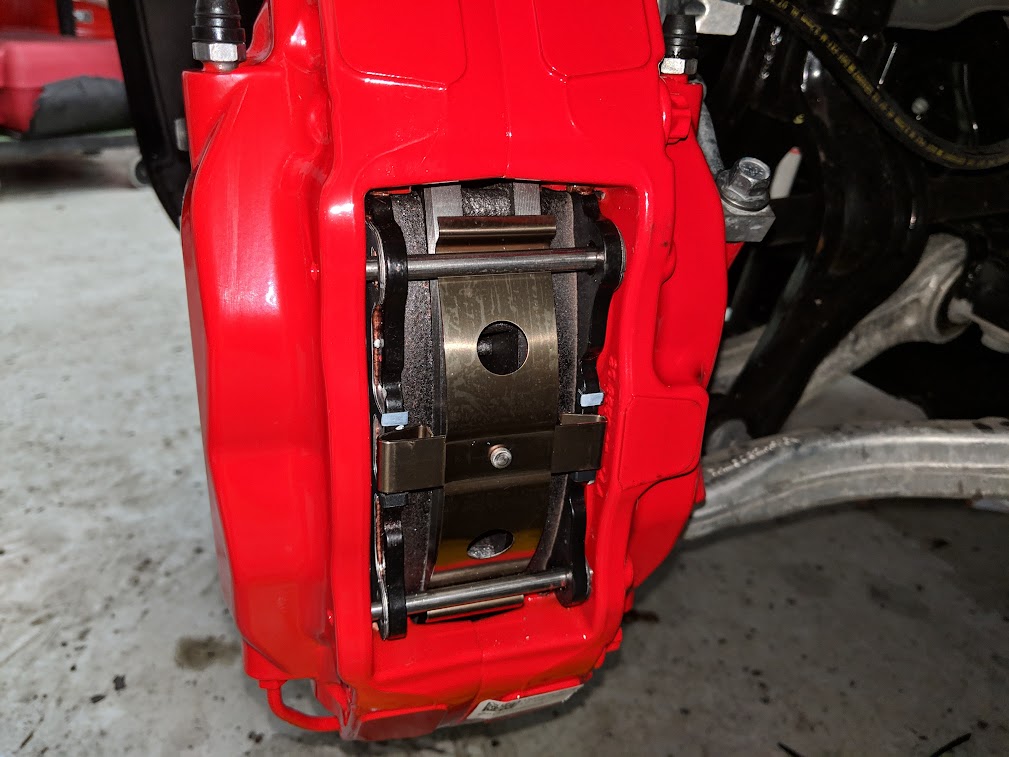I purchased my P3D+ with the intent of tracking it at HPDE's. It became pretty clear that the stock PUP brakes were not up to the task of track driving; at the very least new pads and brake fluid would be needed. However, pad selection was poor and the stock rotors are pretty thin at 25mm. So I began investigating ways to retrofit the Model S Calipers without it costing an arm and a leg.
I sourced Centric (StopTech) Rotors and had them custom machined and drilled to accommodate the Model S Calipers with some supporting hardware. Paired with Hawk DTC-70's and Motul RBF-600 they performed flawlessly at VIR.
I wanted to share my retrofit with the community and see if others would be interested in purchasing my kit. This kit will also work on non-performance Model 3's and those without the PUP. I am not ready to release them yet (still making some tweaks), but I also don't want to invest a bunch of time and money if no one is interested. I am guessing the kit will be in the $500-$600 range (rotors and supporting hardware, I can help source Calipers if needed, you can source pads of your choice).
Pro's:
Con's:



I sourced Centric (StopTech) Rotors and had them custom machined and drilled to accommodate the Model S Calipers with some supporting hardware. Paired with Hawk DTC-70's and Motul RBF-600 they performed flawlessly at VIR.
I wanted to share my retrofit with the community and see if others would be interested in purchasing my kit. This kit will also work on non-performance Model 3's and those without the PUP. I am not ready to release them yet (still making some tweaks), but I also don't want to invest a bunch of time and money if no one is interested. I am guessing the kit will be in the $500-$600 range (rotors and supporting hardware, I can help source Calipers if needed, you can source pads of your choice).
Pro's:
- Rotors are 32mm thick compared to the stock 25mm, a 28% increase in thermal capacity!
- Fit's under the Stock 18" Wheel, PUP Caliper requires Stock 19" Wheels
- Pads can be changed without removing the caliper, unlike the Model 3 Calipers (PUP or not)
- Pad selection is much better
- Cost is reasonable, you don't have to spend an arm and a leg to get a factory-feel/look BBK
Con's:
- They are hefty at 28lbs each (compares to 21lb stock rotors), though I doubt you would notice any difference in most scenarios.


